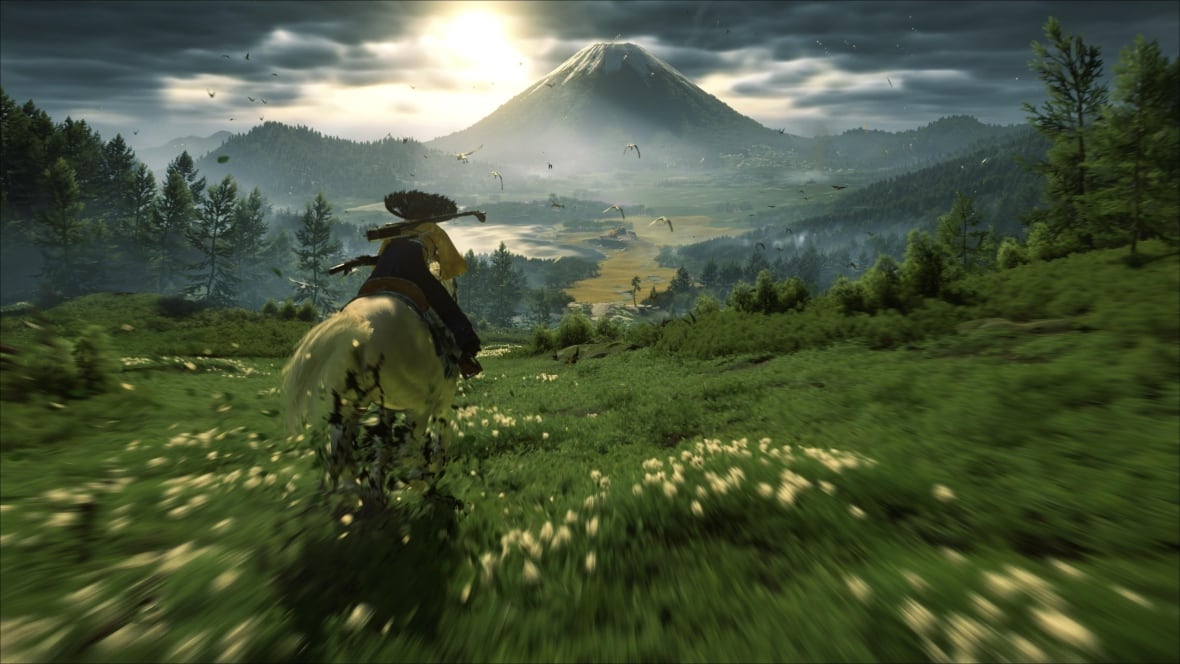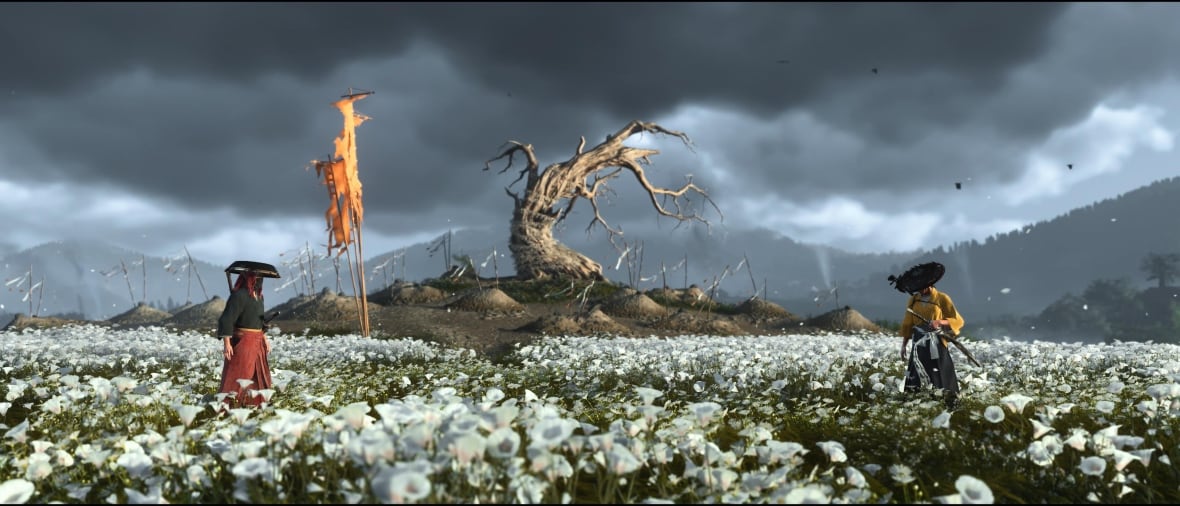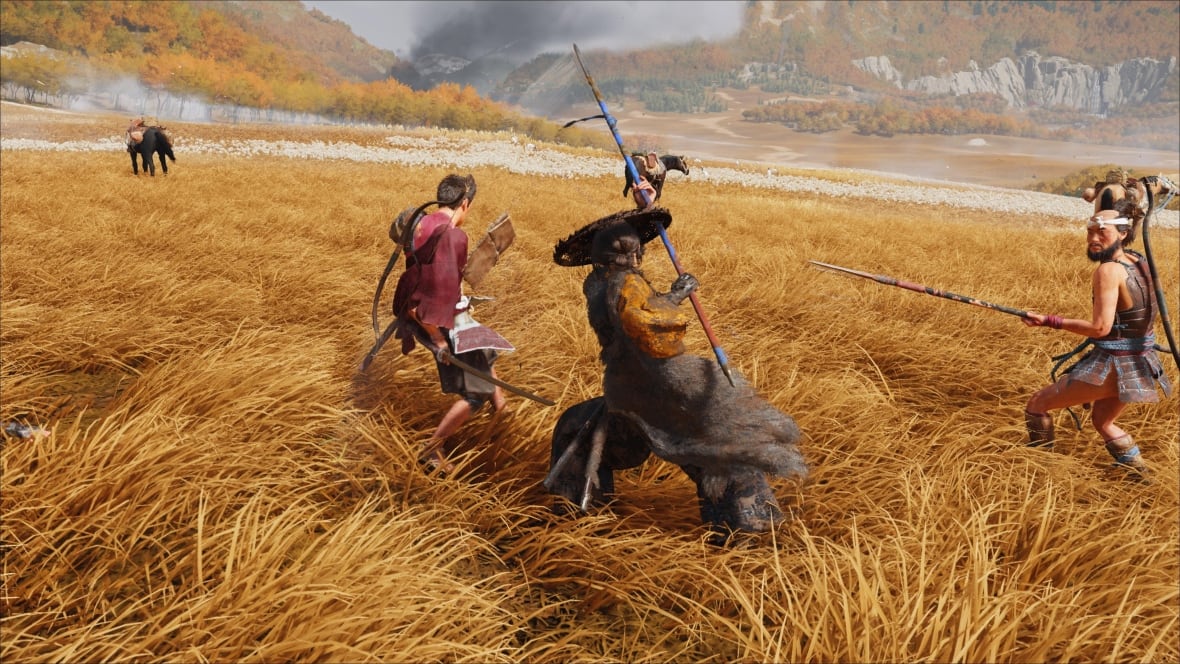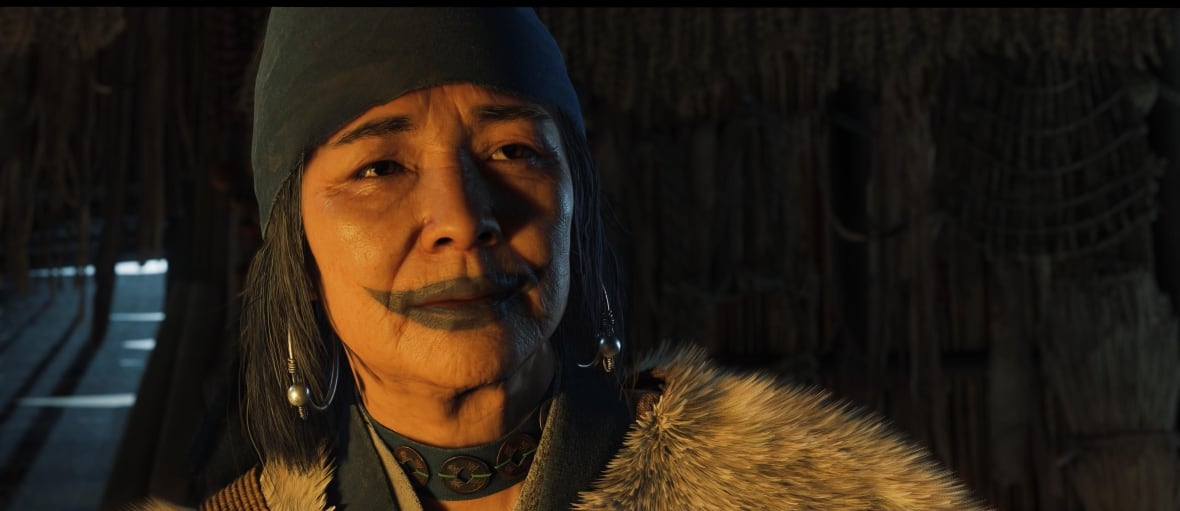Ghost of Yotei is a familiar but intoxicating love letter to samurai films

The first thing that will hit you about Ghost of Yotei, a new tentpole, open-world game for Sony's PlayStation 5, is how utterly beautiful it is.
Atsu, a lone ronin, races through the grassy fields of northern Japan on her white steed. Herds of wild horses and flocks of birds streak across the screen, as if on cue. The snowy peak of Mount Yotei is in the background, looking rendered out of paint brush strokes instead of digital polygons.
Some players might be worried that Yotei, the followup to 2020's Ghost of Tsushima, is more style than substance — and in some ways, they're right. From climbing mountain trails to sneaking through enemy camps, you'll probably be doing a lot of things you've done in games past.
But that doesn't make it any less worth playing, as it wraps familiar open-world tropes with thoughtful, luxurious presentation to tell a classic samurai revenge tale that could catapult its main performer to a next level of stardom.
'Dangerous, beautiful landscape'Ghost of Yotei takes place in Japan's Edo period, in the early 1600s. Atsu, voiced in English by actor Erika Ishii, returns to her childhood home of Ezo, or modern-day Hokkaido.
She's out to exact vengeance on the Yotei Six, cutthroat villains led by a lord who, 16 years prior, killed her parents and left her for dead. She spent the interim years in the south working as a mercenary and is back in Ezo to hunt down her parent's killers.
Ishii's performance far outshines those of the supporting cast — portraying a young woman haunted by her past, dead set on revenge, yet struggling when would-be mentors challenge her willingness to carry it out at the cost of her inner peace.

This after some players expressed disappointment that Tsushima's protagonist Jin Sakai would not return for Yotei. (A smaller, reactionary subset expressed disdain that a female character was taking the spotlight.)
Yotei's creative director Jason Connell takes it as a compliment that Jin's story resonated with so many gamers, but says the team set out to build similar excitement about a different time period that still paid homage to samurai films by the likes of Akira Kurosawa or Takeshi Miike.
He also says telling a new character's story let them put a spotlight on Hokkaido's "dangerous, beautiful landscape."
"Creating a character that's on a very classical vengeance quest inside of that massive landscape was very intoxicating to us," he told CBC News.
Familiar trappingsDespite the new setting, players should feel right at home if they've played Tsushima — or any number of similar open-world games with historical or pseudo-historical settings. (Assassin's Creed, I'm looking at you.)
You'll spend most of your time exploring Ezo, tracking down notorious criminals for bounty, sneaking through enemy camps and dispatching them in bloody fashion, and running and climbing mountain paths for shiny rewards.

Little of this feels revolutionary, but the implementation blends with the presentation to feel unique — keeping familiar elements from Tsushima that nonetheless still stand out in the genre. For example, instead of following a floating arrow to your next mission, visible wisps of wind blow in the right direction, with trees and plants swaying in unison.
Connell says a major challenge building a game as vast as Yotei involved balancing innovative elements and familiar notes in the genre, the latter of which he said are often enjoyed to their fullest by people looking for a "comfort food" feel in their gaming.
So unless you're a completionist, you should find new and surprising things to do without feeling obligated to climb every mountain path or hunt down every hidden collectible.
"To us, if we always head in the direction of freedom and remove some of the boundaries and remove some other directions, then we're heading in the right way," he said.

Yotei adds a handful of weapons beyond the humble katana for more complexity and variety in hand-to-hand combat. My favourite is the spear, or yari, which puts some distance between you and your enemies; and small grenade-like bombs that prove as dangerous to Atsu as to her foes.
The centrepiece story missions hold your hand with generous scripted segments and long dialogues as the supporting characters dip in and out of Atsu's generally solitary mission. The major arcs build like mini-seasons of prestige television, reaching final confrontations or revelations that frequently made me gasp or shout in excitement.
Balancing that out are shorter side stories that fill in Atsu's life as a wandering mercenary — highlights including a hunt for a man who just wants to play music on his shamisen, which might be cursed; and the tale of a former general mourning her daughter which is tinged with horror elements unseen elsewhere in the game. They feel like smart, sharp vignettes more in the vein of the anime Samurai Champloo, or the first season of The Mandalorian.
Special mention should be spent on a section where Atsu spends time with the Ainu people, Ezo's indigenous population, who have been mostly forced out by southern samurai expansion.
The Ainu are rarely represented even in native Japanese media, so seeing them is a welcome surprise. But it feels like Sucker Punch couldn't think of much else to do with a mostly pacifist faction in a story drenched in blood. So the Ainu remain a respectful, but ultimately inconsequential part of the narrative.
On paper, Ghost of Yotei is much simpler than games in Sony's other tentpole series. It isn't as narratively ambitious as God of War or The Last of Us, instead telling a traditional revenge tale with enough flourishes to entertain and even surprise once in a while. It's not as mechanically dense as Horizon: Forbidden West, but the player will find little friction in the tasks they're asked to complete, which is a virtue unto itself.
Sucker Punch should be commended to recognizing that even when it comes to open-world video games that take dozens of hours to complete, less can be more.

cbc.ca





